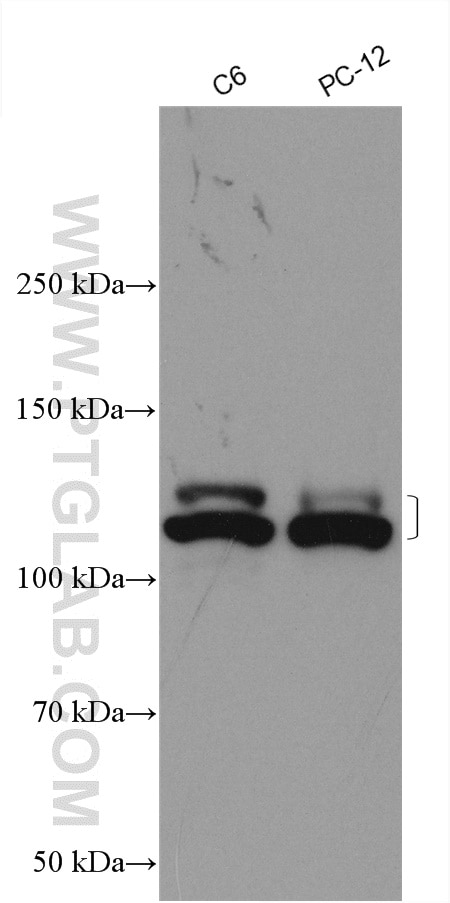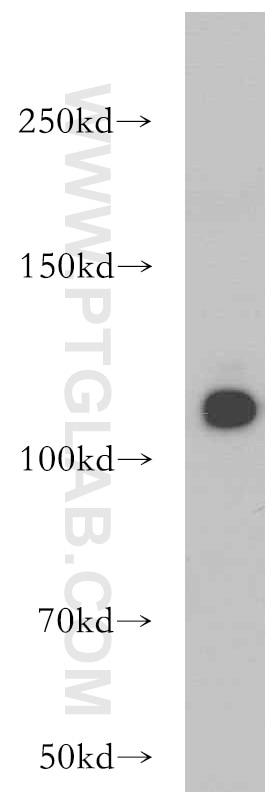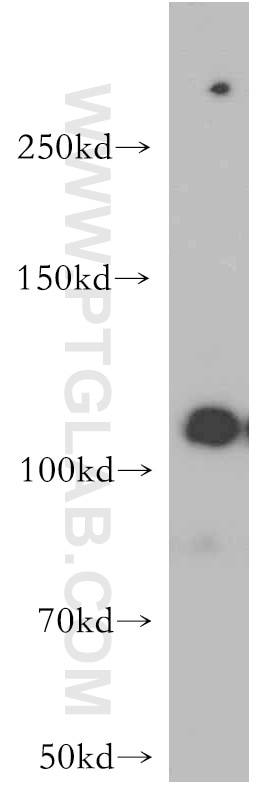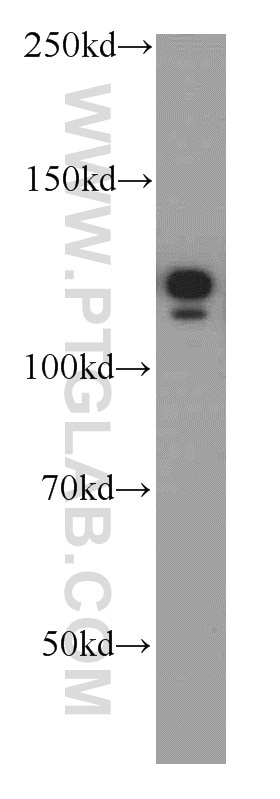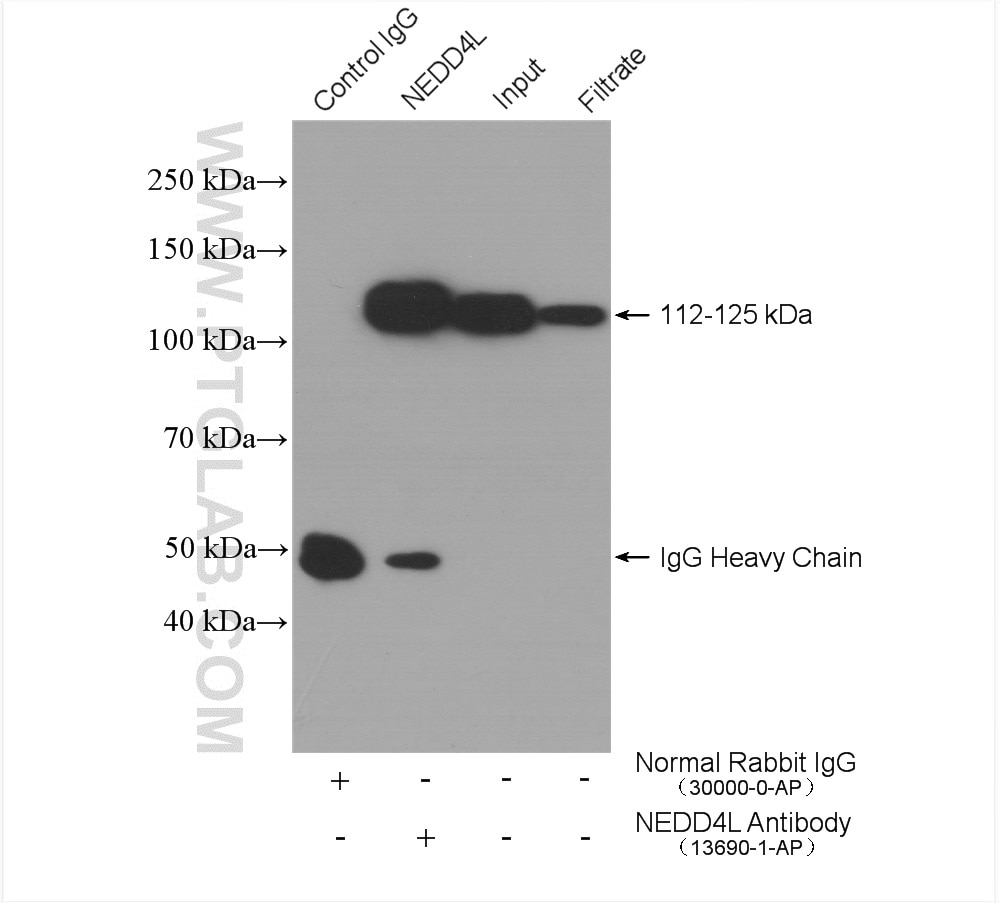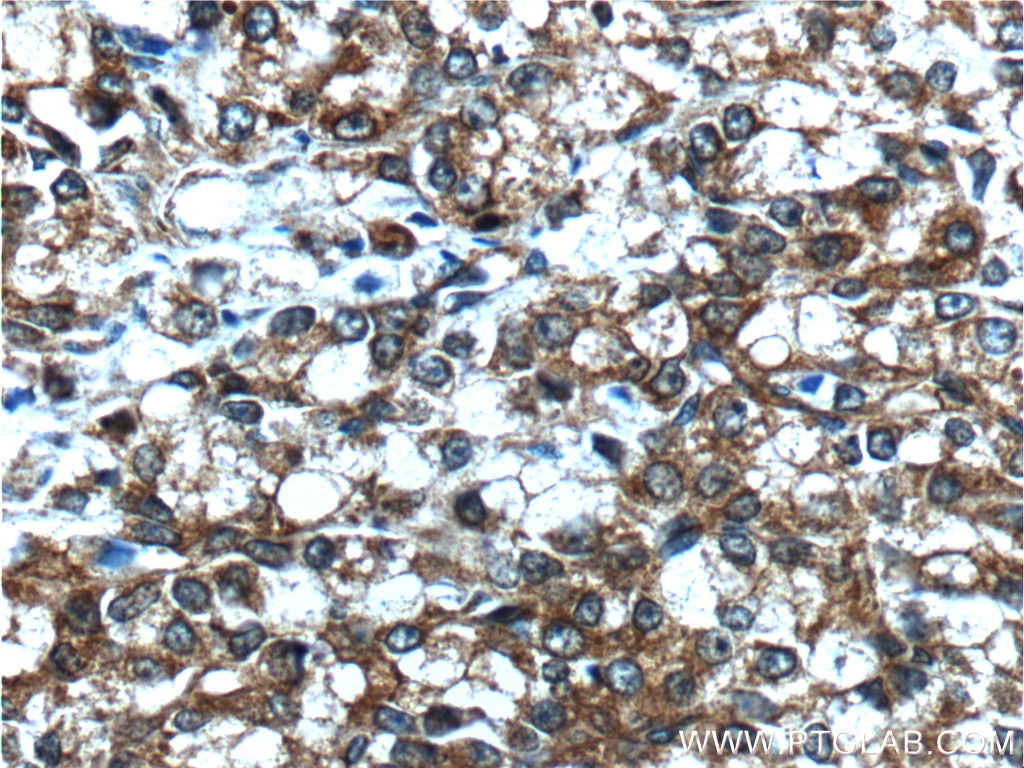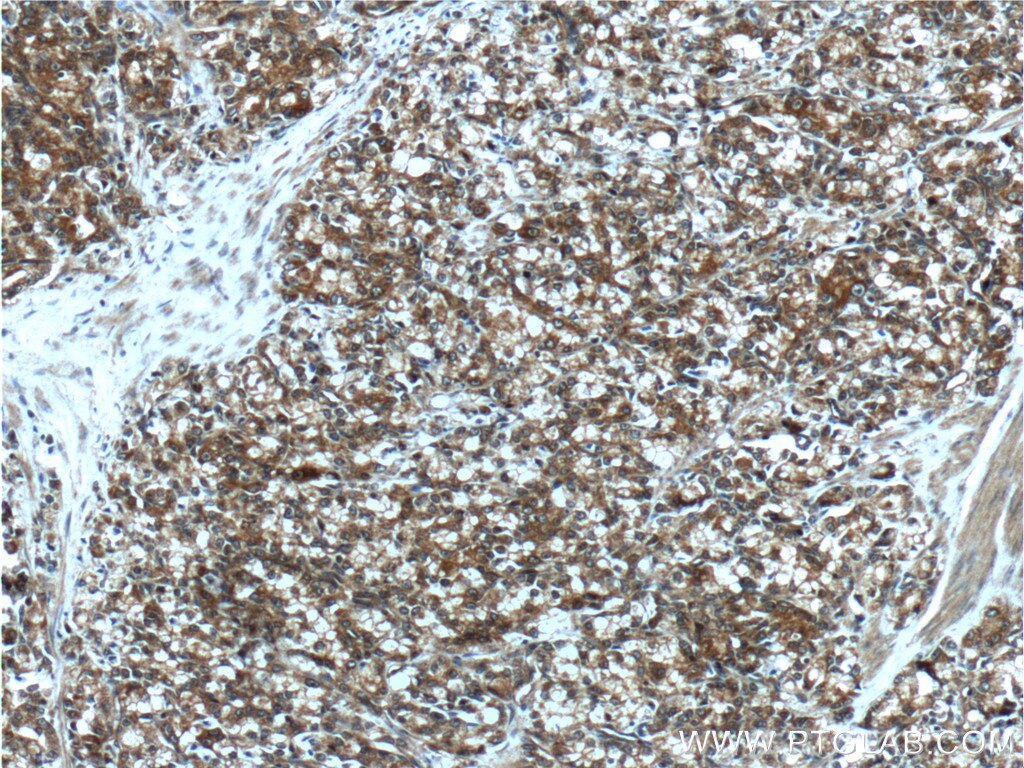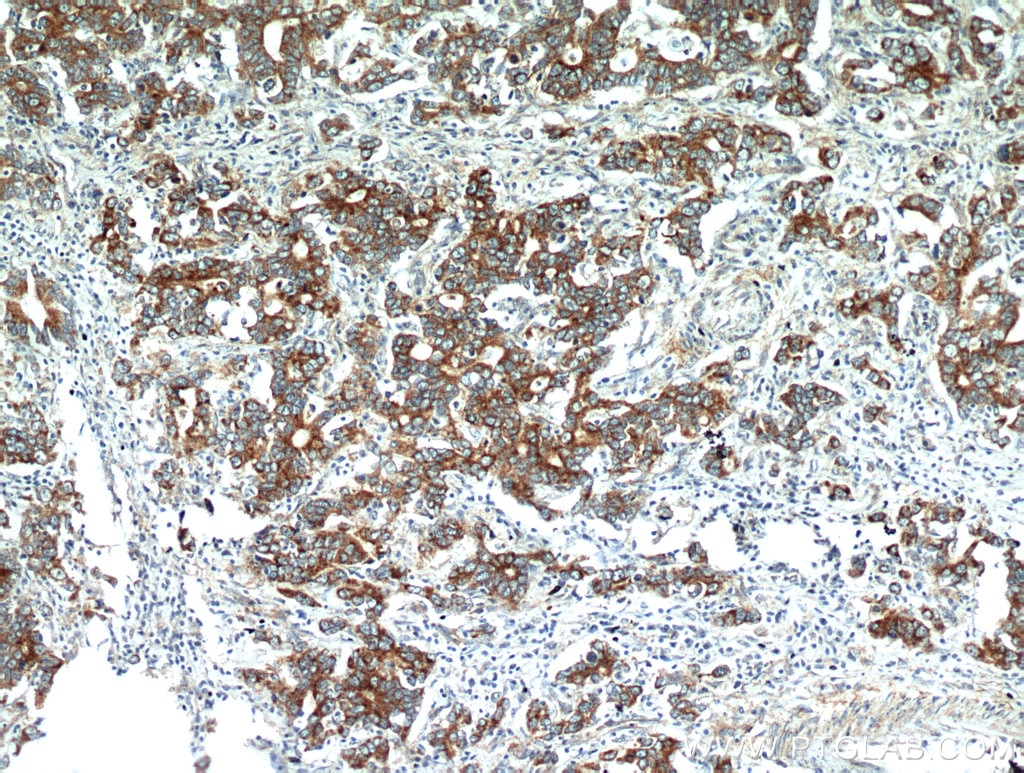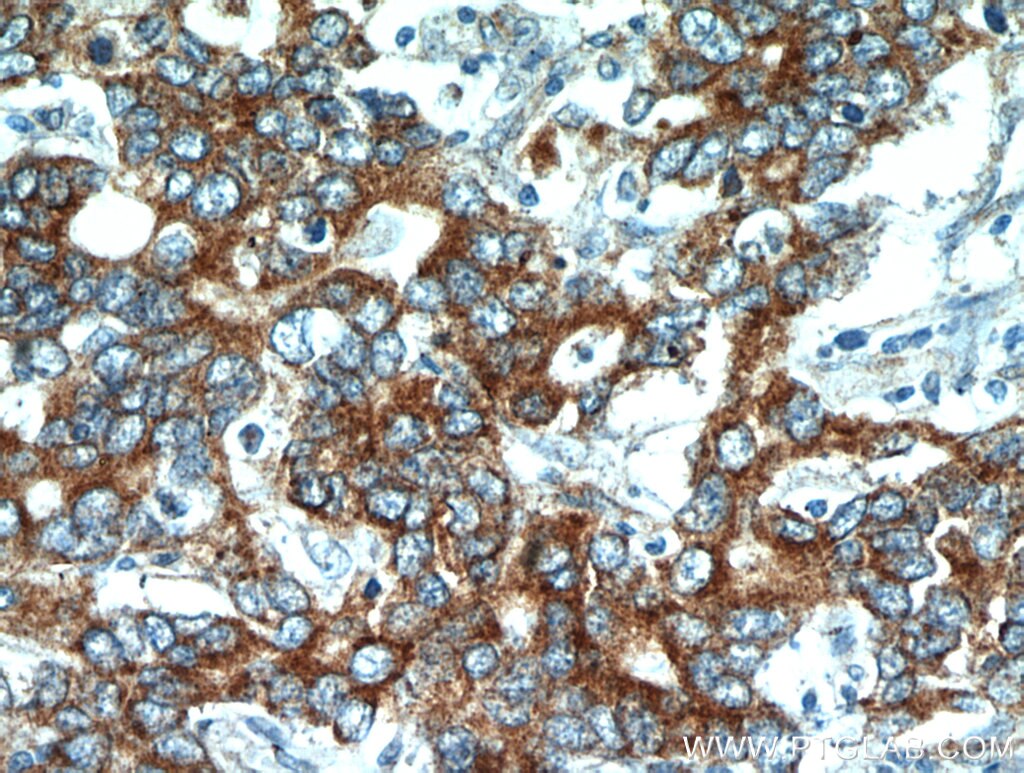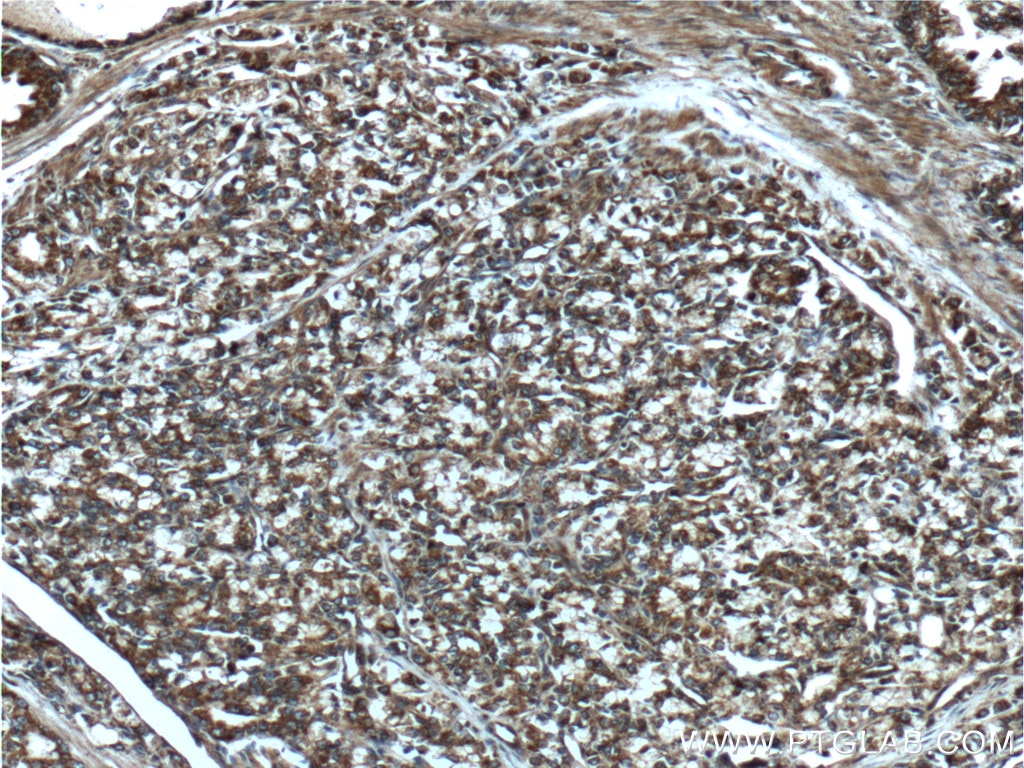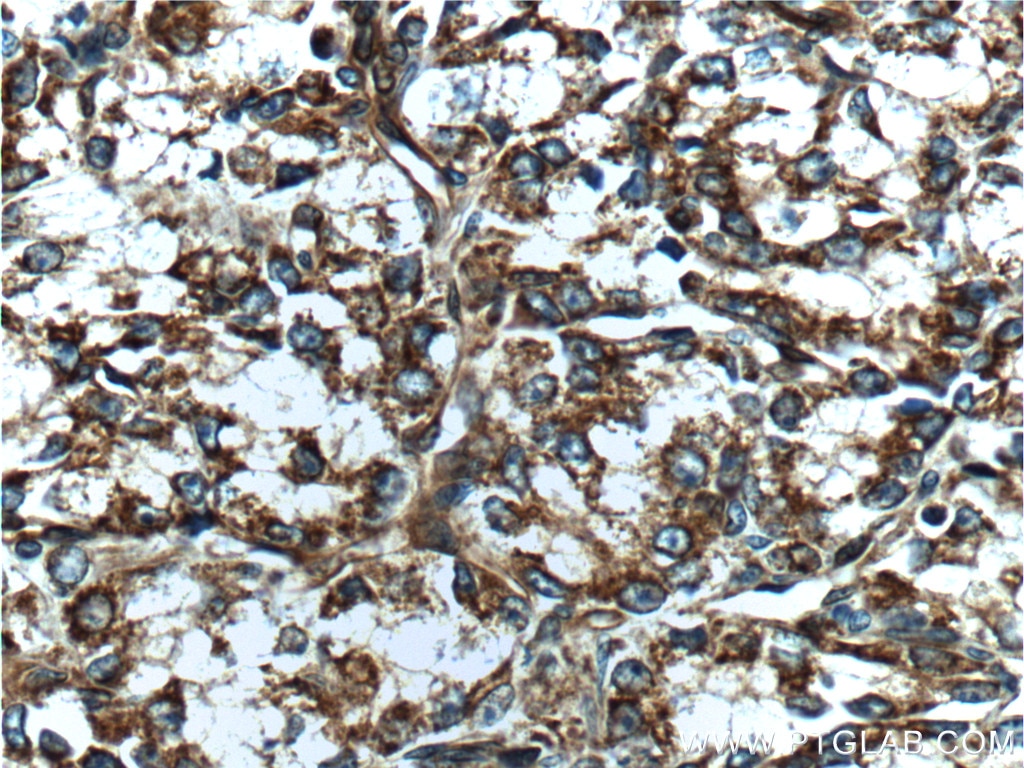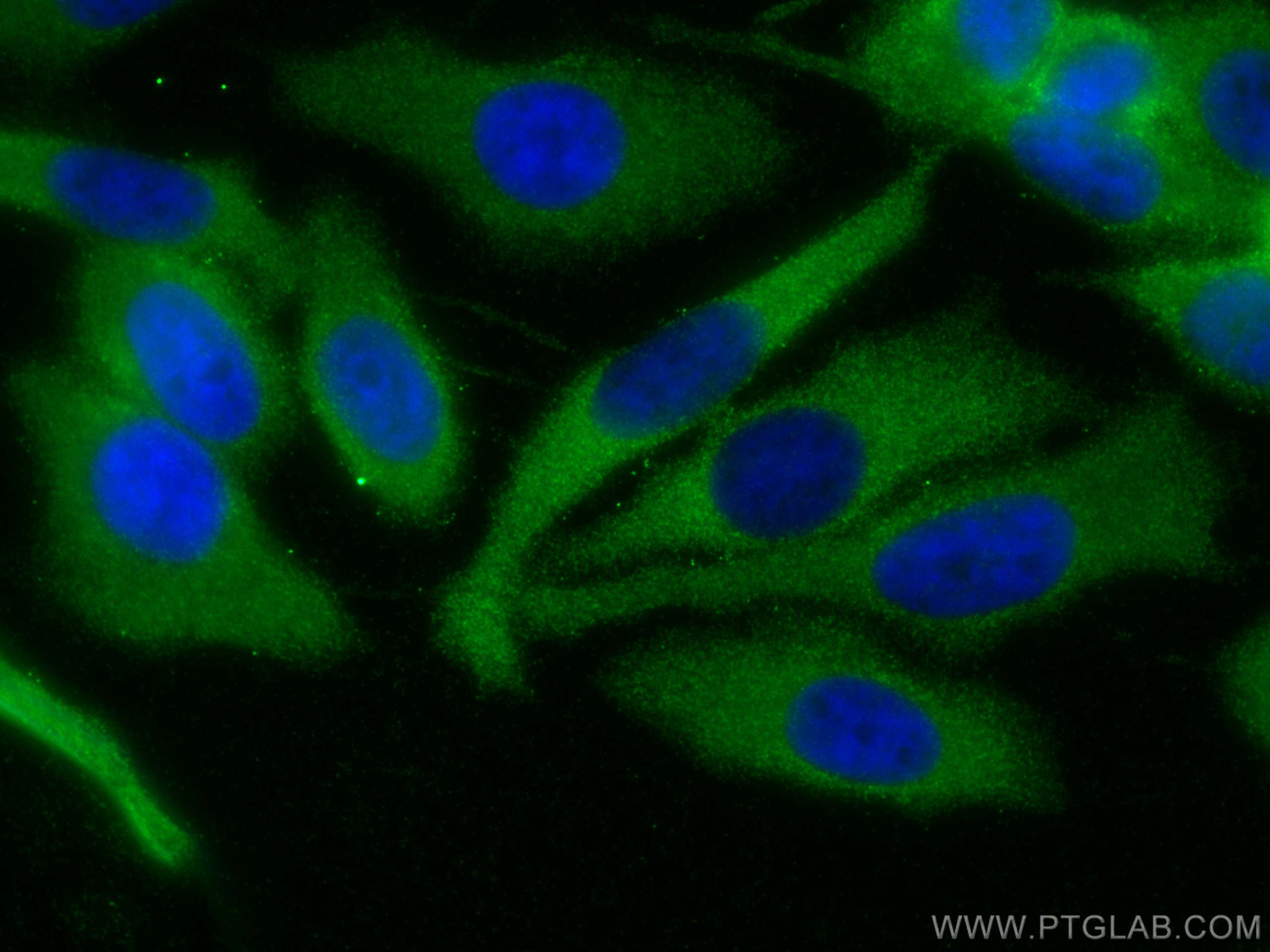- Featured Product
- KD/KO Validated
NEDD4L Polyklonaler Antikörper
NEDD4L Polyklonal Antikörper für WB, IHC, IF/ICC, IP, ELISA
Wirt / Isotyp
Kaninchen / IgG
Getestete Reaktivität
human, Maus, Ratte und mehr (1)
Anwendung
WB, IHC, IF/ICC, IP, CoIP, ELISA
Konjugation
Unkonjugiert
Kat-Nr. : 13690-1-AP
Synonyme
Geprüfte Anwendungen
| Erfolgreiche Detektion in WB | C6-Zellen, HT-1080.Zellen, PC-12-Zellen, PC-3-Zellen |
| Erfolgreiche IP | C6-Zellen |
| Erfolgreiche Detektion in IHC | humanes Magenkrebsgewebe, humanes Prostatakarzinomgewebe Hinweis: Antigendemaskierung mit TE-Puffer pH 9,0 empfohlen. (*) Wahlweise kann die Antigendemaskierung auch mit Citratpuffer pH 6,0 erfolgen. |
| Erfolgreiche Detektion in IF/ICC | PC-3-Zellen |
Empfohlene Verdünnung
| Anwendung | Verdünnung |
|---|---|
| Western Blot (WB) | WB : 1:1000-1:5000 |
| Immunpräzipitation (IP) | IP : 0.5-4.0 ug for 1.0-3.0 mg of total protein lysate |
| Immunhistochemie (IHC) | IHC : 1:500-1:2000 |
| Immunfluoreszenz (IF)/ICC | IF/ICC : 1:50-1:500 |
| It is recommended that this reagent should be titrated in each testing system to obtain optimal results. | |
| Sample-dependent, check data in validation data gallery | |
Veröffentlichte Anwendungen
| KD/KO | See 6 publications below |
| WB | See 42 publications below |
| IHC | See 13 publications below |
| IF | See 9 publications below |
| IP | See 8 publications below |
| CoIP | See 7 publications below |
Produktinformation
13690-1-AP bindet in WB, IHC, IF/ICC, IP, CoIP, ELISA NEDD4L und zeigt Reaktivität mit human, Maus, Ratten
| Getestete Reaktivität | human, Maus, Ratte |
| In Publikationen genannte Reaktivität | human, Hausschwein, Maus, Ratte |
| Wirt / Isotyp | Kaninchen / IgG |
| Klonalität | Polyklonal |
| Typ | Antikörper |
| Immunogen | NEDD4L fusion protein Ag4565 |
| Vollständiger Name | neural precursor cell expressed, developmentally down-regulated 4-like |
| Berechnetes Molekulargewicht | 854 aa, 96 kDa |
| Beobachtetes Molekulargewicht | 112 kDa, 125 kDa |
| GenBank-Zugangsnummer | BC032597 |
| Gene symbol | NEDD4L |
| Gene ID (NCBI) | 23327 |
| Konjugation | Unkonjugiert |
| Form | Liquid |
| Reinigungsmethode | Antigen-Affinitätsreinigung |
| Lagerungspuffer | PBS with 0.02% sodium azide and 50% glycerol |
| Lagerungsbedingungen | Bei -20°C lagern. Nach dem Versand ein Jahr lang stabil Aliquotieren ist bei -20oC Lagerung nicht notwendig. 20ul Größen enthalten 0,1% BSA. |
Hintergrundinformationen
NEDD4L(E3 ubiquitin-protein ligase NEDD4-like) is also named as KIAA0439, NEDL3, Nedd4-2. It accepts ubiquitin from an E2 ubiquitin-conjugating enzyme in the form of a thioester and then directly transfers the ubiquitin to targeted substratesand and is the principal ubiquitin ligase that selectively targets activated SMAD2 and SMAD3 for destruction (PMID:19917253). Nedd4L binds the PY motif of ENaC COOH terminals and catalyzes ubiquitination of the NH2 terminus of the protein for subsequent degradation (PMID:18268134). It has some isoforms produced by alternative splicing. This antibody may have cross reaction with NEDD4 due to the high homology of the antigen.
Protokolle
| PRODUKTSPEZIFISCHE PROTOKOLLE | |
|---|---|
| WB protocol for NEDD4L antibody 13690-1-AP | Protokoll herunterladen |
| IHC protocol for NEDD4L antibody 13690-1-AP | Protokoll herunterladenl |
| IF protocol for NEDD4L antibody 13690-1-AP | Protokoll herunterladen |
| IP protocol for NEDD4L antibody 13690-1-AP | Protokoll herunterladen |
| STANDARD-PROTOKOLLE | |
|---|---|
| Klicken Sie hier, um unsere Standardprotokolle anzuzeigen |
Publikationen
| Species | Application | Title |
|---|---|---|
Nat Genet Mutations in the HECT domain of NEDD4L lead to AKT-mTOR pathway deregulation and cause periventricular nodular heterotopia. | ||
Cell Death Differ Aagab acts as a novel regulator of NEDD4-1-mediated Pten nuclear translocation to promote neurological recovery following hypoxic-ischemic brain damage. | ||
Theranostics JP1 suppresses proliferation and metastasis of melanoma through MEK1/2 mediated NEDD4L-SP1-Integrin αvβ3 signaling. | ||
Pharmacol Res Piezo2 channel in nodose ganglia neurons is essential in controlling hypertension in a pathway regulated directly by Nedd4-2. | ||
Rezensionen
The reviews below have been submitted by verified Proteintech customers who received an incentive for providing their feedback.
FH Andrew (Verified Customer) (07-23-2025) | This antibody worked as advertised with little to no non-specific staining
|
